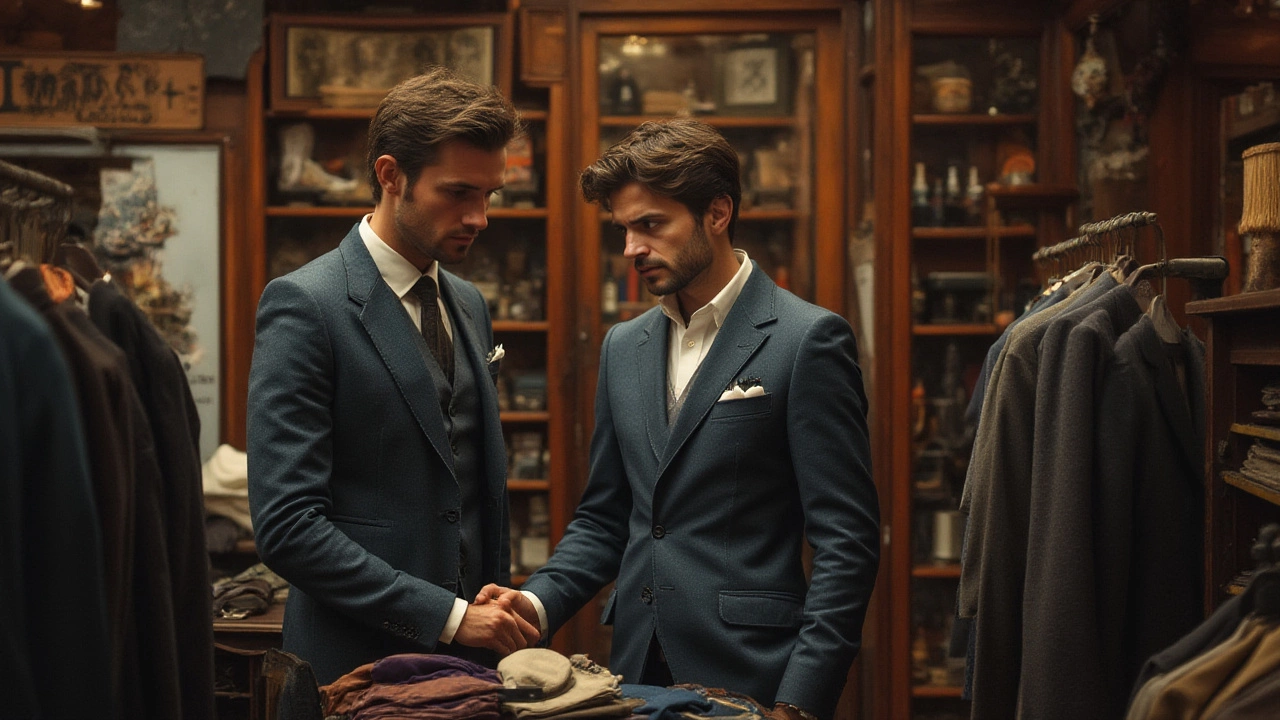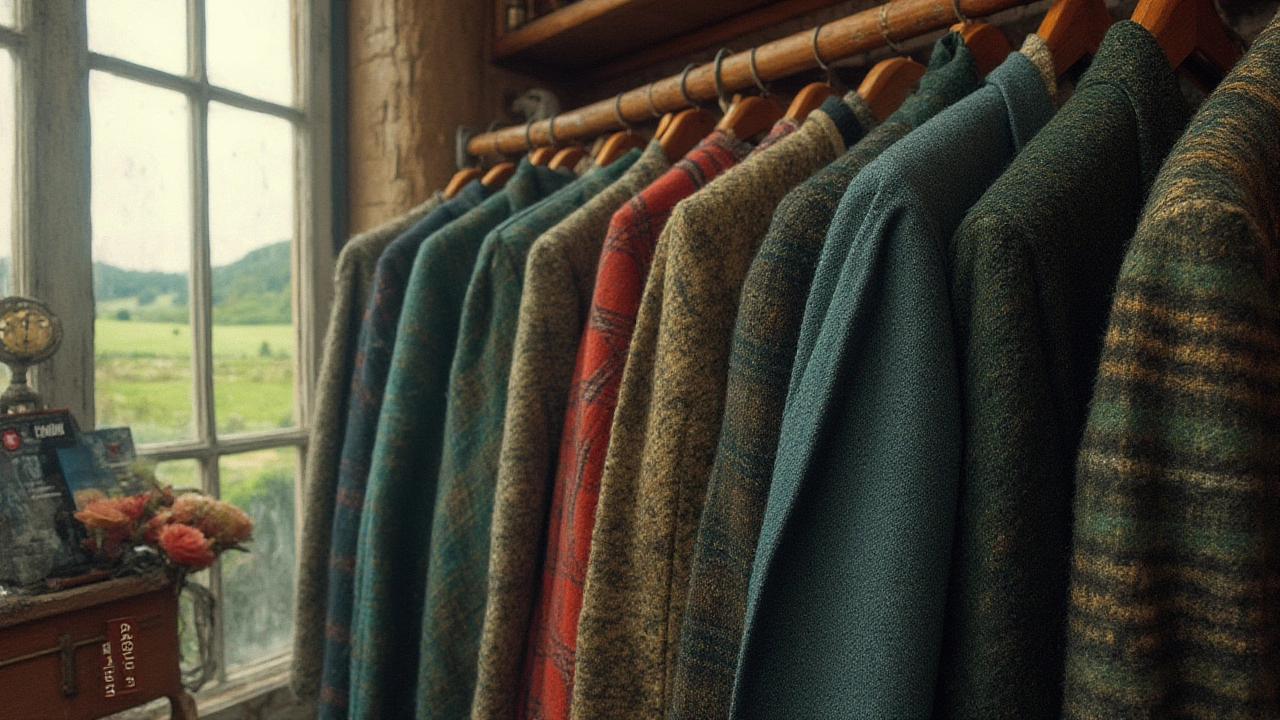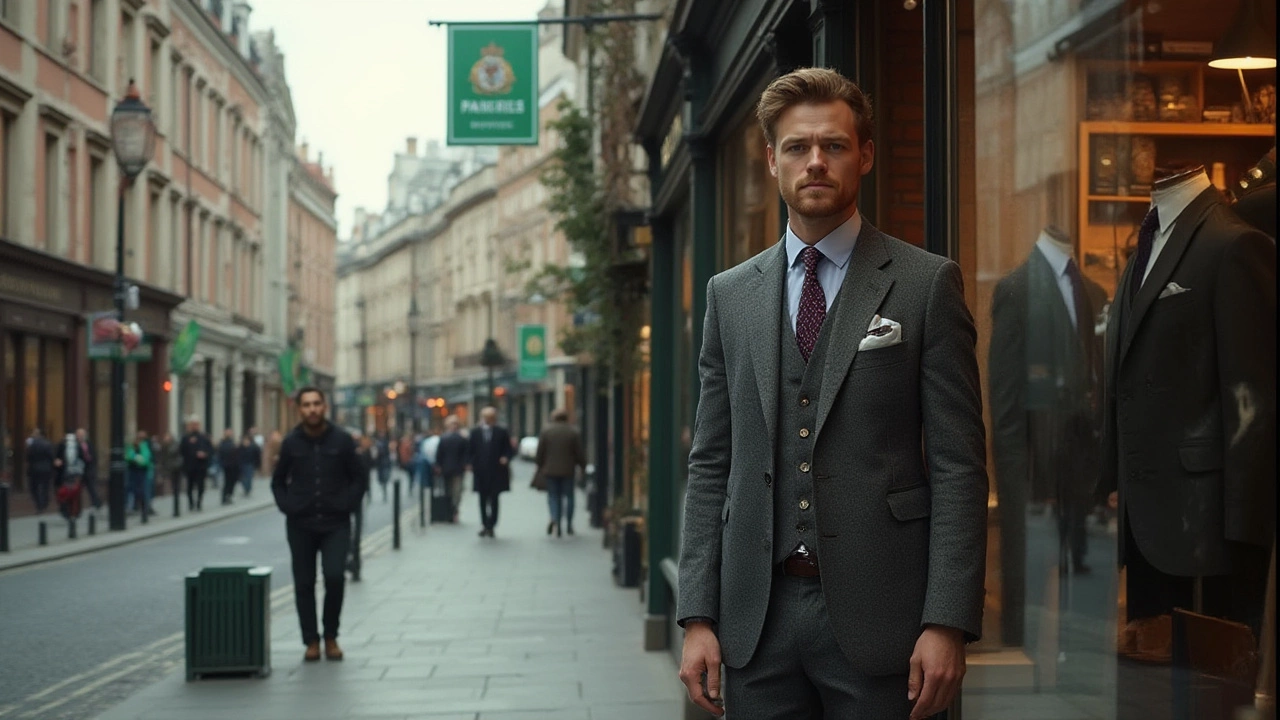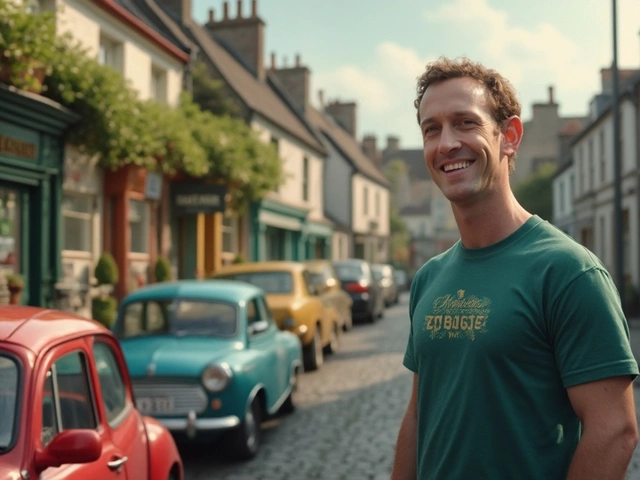Walk through any Irish city—Dublin or Cork, Galway on a race day, Limerick before a wedding—and you’ll notice one thing if you look close: Suits in Ireland are not just clothes, they’re a sign of respect. Respect for the man who wears it, for the occasion, and for pure Irish pride. So if you’re sizing up your wallet and your options, maybe for your first real job, a big night out, or the upcoming college graduation, you’re probably thinking: what should I actually pay for a good suit in Ireland?
The Real Cost of Suits in Ireland: Understanding Price, Value & Local Traditions
A suit isn’t just something you grab off a hanger. In the Irish market, quality, fit, and even where you buy count for a lot. Walk along Grafton Street or St Patrick’s Street and they’ll offer you everything from high-street brands like Marks & Spencer and Moss Bros to dedicated Irish legends like Louis Copeland & Sons or Con Murphys. But the price jump can be serious—so what’s fair?
Price-wise, Ireland can feel pricey, but the quality does back it up. Here’s a local breakdown, so you know what you’re paying for in euros—not fantasy. Entry-level off-the-rack suits in reputable department stores (think Brown Thomas or Arnotts) can start around €200 to €400. Take a step into suit specialists or well-known Irish tailoring houses, and you’re looking at €500 to €900 for something higher-grade, ready-to-wear but carefully finished. Go into made-to-measure or bespoke territory (especially in Dublin), and prices typically range from €1,000 to over €2,500. These are not just numbers—these reflect the craft, fabric, and Irish reputation behind the suit.
Local tradition pushes lots of men to invest in their first proper suit for a debs, a cousin’s wedding, or their first communion as a godfather. It’s very much part of Irish family culture. The big surprise? Suits are heavily seasonal. Many shops clear stock in late July and January, so you can save hundreds if you time it right. Around Christmas, expect higher prices due to demand for festive formal wear.
Don’t forget the extras. Good tailors in Ireland—places like Magee in Donegal or Best Menswear in Cork—often bundle basic alterations in the cost. But check the small print; some only hem trousers. Waist adjustment, sleeve length changes, or tapering can add €20 to €80 depending on the work. Want the whole ‘made in Ireland’ appeal? Magee makes suits in Donegal tweed, with centuries of style woven into every jacket—no sweatshop materials, and a serious nod to Irish heritage.
If you’re hunting for deals, outlets like Kildare Village can chop prices by half, though the fabric choices may be last season. Renting remains big for one-off events (think Black Tie in Dublin or Suits You in Galway); expect to pay €90 to €180 for a weekend. It’s handy if you’re not ready to buy, but investing early means you’ll always put your best foot forward—think of how many Irish jobs are landed or deals sealed over a good first impression.

How to Spot Quality Irish Suits: Fabrics, Fits, and the Perks of Local Tailoring
Everyone’s heard horror stories of buying a suit that looked fine on the hanger, but felt like sandpaper after a pint or two. That’s why spotting true quality is crucial. Here’s where Ireland’s tradition of craftsmanship shines. Take a look at the label—wool is king for Irish weather. Tweed is still a mainstay, not just for older generations, but loads of younger lads are embracing it for vintage weddings or countryside events in Mayo or Kilkenny because it breathes, insulates, and frankly, looks smashing in photos.
If you’re in a place that offers suits with a “mix” of fibres—polyester or viscose—be wary. Anything over 50% synthetic will lose its shape, shine too much under pub lights, and quite possibly have you sweating through your shirt at the worst possible moment. Irish deparment stores will have labels with origins like Loro Piana or Vitale Barberis Canonico, known for producing strong but buttery-soft wool fabrics. Always check the lining, too. A half-canvas or full-canvas construction (Dublin’s Louis Copeland will talk your ear off about this) means the suit molds to you over time, rather than sagging like cheap cardboard.
Fit trumps brand every single time. Irish builds are getting broader and taller—a fact not lost on new local brands like Benetti Menswear. Most Irish shops offer free or reasonably priced adjustments, so even if you’re buying off the peg, ask about tapering legs, slimming jackets, or shortening sleeves. Don’t accept a suit if the shoulder sits high, or if there are ripples on your chest when you button it. Pay attention to your own shape: a classic two-button never goes out of style, but if you’re feeling adventurous, double-breasted is back, especially for city events in Belfast, Dublin, and Cork. Traditionalists still love a three-piece for weddings or races, and you’ll see plenty in sapphire blue or Donegal grey at the Galway Races each summer.
Irish shops stand out for service, too. Many, like Louis Copeland or Tom Murphy in Cork, throw in a free consultation—so bring your shirt and shoes, let them check your pocket square game, and don’t be shy about what you want. Remember, a proper Irish tailor won’t upsell for the sake of it. Ask for offcuts if you ever want spare buttons, and be direct about what you can pay—they’ll respect honesty. Keep an eye on wedding season (late spring to early autumn), as the best tailors often have waiting lists of up to eight weeks. Book early if you want a custom job.

Tips for Buying Your Next Suit in Ireland: Practical Advice for Every Budget
Here’s what most Irish lads learn the hard way: shelling out for a great suit is a one-off expense, but it pays you back every time you zip it up. If your budget’s tight, hit the sales, especially as suits rarely shift fast outside graduation and wedding season. Check online deals from Brown Thomas, Arnotts or even River Island—often, you’ll spot an online-only price drop. If you’re shopping for something unique (maybe tweed from Magee, or a sharp city look from Remus Uomo), join their mailing lists for flash sales.
Don't overlook older independent places. Many have in-house tailors who can transform a basic €300 suit to something that looks tailor-made for less than €70 extra. Sometimes a mid-range suit that fits everywhere but the waist or sleeves can be tweaked cheaper than hunting down perfection off the peg.
When sussing out special events—Debs, St. Patrick’s Day receptions, corporate interviews—see what the local norm is. At Trinity College, pinstripes or subtle checks are everywhere. Switch to lighter wools from June to August, especially if you’re heading to a summer wedding in Wexford or Killarney, where Irish weather might just surprise you with a proper heatwave. In colder months, layer up with a wool waistcoat or thicker jacket, because let’s face it—an Irish December can chill you to the bone while you’re waiting for a taxi on Dame Street.
The extras matter: good shoes (leather, never plastic), a classic tie, a cotton pocket square or even cufflinks if you’re aiming for the full deal. Irish tailors will often bundle discounts if you grab multiple add-ons, so don’t be afraid to ask. Many groomsmen score extra value by kitting out the whole wedding party in one shop—get your best man to haggle, it’s almost a tradition now.
If you’re not sure where to start, use local review sites, ask friends who’ve bought recently, or pop into a handful of shops for quotes. In Ireland, the miracle is how quickly word spreads—if one shop has a runaway sale, you’ll hear about it by lunchtime.
So, what should you pay for a good suit in Ireland? For an off-the-rack gem, €400 to €700 gets you something both smart and lasting, with serious punch for Irish life’s big moments. Spend above €1,200 and you’re in the world of personal tailoring, hand-stitched lapels, and suiting stories you’ll tell over pints. Whatever your budget, a good Irish suit isn’t just fabric—it's a ticket to confidence, respect, and looking sharp without feeling stuffy. And if you buy smart, you’ll have your answer every time someone asks, 'Where did you get that suit?'—right here in Ireland, exactly where it belongs.


